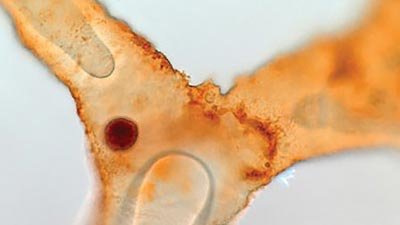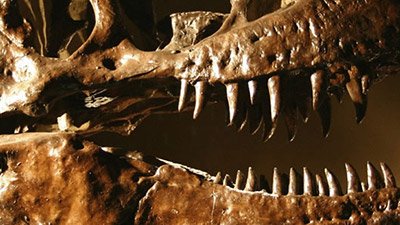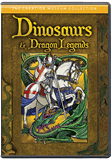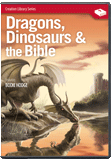
Dinosaur Teeth Hold Clues to Whether Species Was Warm or Cold-Blooded
Warm-blooded, cold-blooded, or none-of-the-above?
News Source
- USA Today: “Dinosaur Teeth Point to Sauropod Body Temperatures”
How do you take a dinosaur’s temperature? Ask nicely? What if it’s dead? Paleontologists have long debated whether dinosaurs were cold-blooded or not. An analysis of sauropod tooth enamel may shed light on the subject, but the debate remains far from settled.
Historically, scientists have assumed that dinosaurs, like living reptiles, were cold-blooded. That is, until the 1960s. As secular paleontologists tried to explain how cold-blooded creatures could survive in polar climates, grow so big, develop the sort of bone structure they have, become fast and active, and evolve into warm-blooded birds, many began to suggest dinosaurs were warm-blooded. (Notice many of the “facts” the scientists were trying to explain are unprovable assumptions. Others are generalizations for which there are living exceptions. See “Did Dinosaurs Turn into Birds?”) Nevertheless, whether a scientist subscribes to evolutionary ideas or not, without live dinosaurs around, the question can only be approached indirectly.
This indirect approach involves isotope ratios. (We recently learned about the diet of “Nutcracker man” from carbon isotopes in tooth enamel.) Scientists have observed that chemical reactions taking place at lower temperatures tend to incorporate more of the heavier, rarer isotopes.
Caltech scientists have therefore been using “clumped-isotope thermometry”1 to make guesses about the climate at the time rocks were formed. John Eiler and Robert Eagle decided to try the method on dinosaur tooth enamel. Tooth enamel is thought to remain stable over time. No radioactive decay is involved. They calibrated their system using “teeth of living animals.”2
Then they measured isotope ratios in fossil teeth “from three large dinosaur species. . . . The team concludes they can safely peg the temperature range of the sauropods at roughly 96 to 101 [degrees Fahrenheit].” These temperatures match those common to mammals and birds.
So why isn’t the body temperature question settled? For one thing, as paleontologist Kevin Padian notes, “We don't have an independent test of how far off the results could be.”
“Our data, taken in isolation, are not unambiguous indicators of endothermy (warm-bloodedness) vs. ectothermy (cold-bloodedness).”
Furthermore, an animal may be warm because it really is endothermic—that is, able to regulate its own body temperature—or because it is an ectotherm which lives in a hot tropical climate, has a fairly high metabolic rate (like some sea turtles), or is so big it has difficulty cooling off. Thus results may be different when smaller dinosaurs are examined. The authors note, “Our data, taken in isolation, are not unambiguous indicators of endothermy (warm-bloodedness) vs. ectothermy (cold-bloodedness).”
From a creationist perspective, the endothermic/ectothermic question for the dinosaurs has no particular ramifications. While evolutionists insist that endotherms evolved from ectotherms, however, we maintain that God created both endotherms and ectotherms during the creation week. And warm-blooded birds were created the day before land animals, including dinosaurs, whatever their metabolism was like.
Further Reading
- Get Answers: Dinosaurs
For More Information: Get Answers
Remember, if you see a news story that might merit some attention, let us know about it! (Note: if the story originates from the Associated Press, FOX News, MSNBC, the New York Times, or another major national media outlet, we will most likely have already heard about it.) And thanks to all of our readers who have submitted great news tips to us. If you didn’t catch all the latest News to Know, why not take a look to see what you’ve missed?
(Please note that links will take you directly to the source. Answers in Genesis is not responsible for content on the websites to which we refer. For more information, please see our Privacy Policy.)
Footnotes
- Sara Reardon, “Big Dinosaurs Were Warm Beasts,” Science, June 23, 2011, http://www.sciencemag.org/news/2011/06/big-dinosaurs-were-warm-beasts.
- Pat Brennan, “Hot blooded? Scientists Read Dino Body Heat,” The Orange County Register, June 24, 2011, http://www.ocregister.com/2011/06/24/hot-blooded-scientists-read-dino-body-heat/.
Recommended Resources

Answers in Genesis is an apologetics ministry, dedicated to helping Christians defend their faith and proclaim the good news of Jesus Christ.
- Customer Service 800.778.3390
- © 2024 Answers in Genesis






